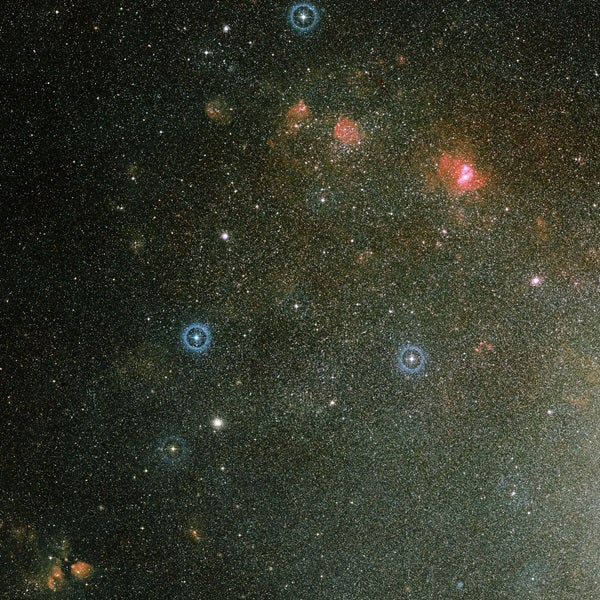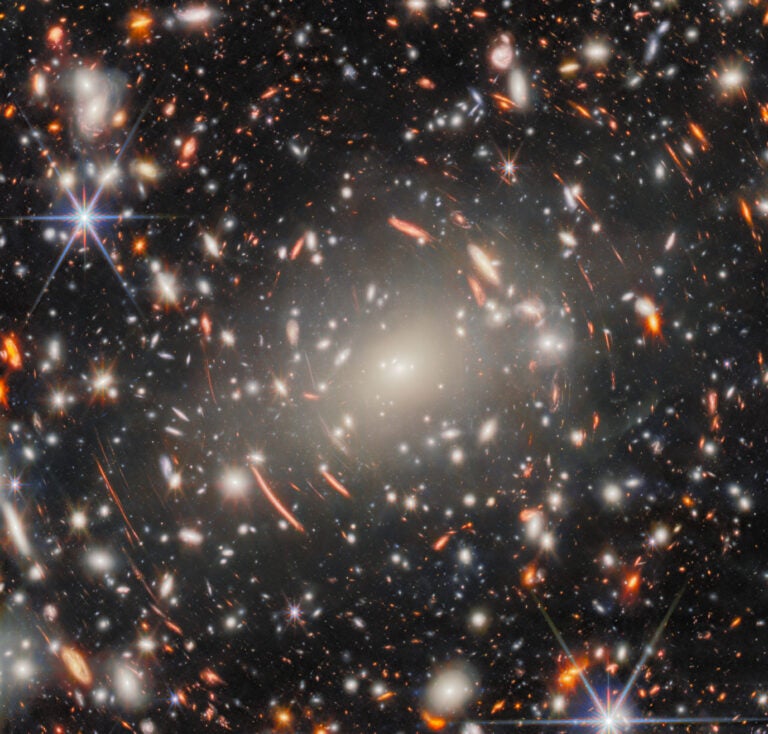Like its companion, the Large Magellanic Cloud (LMC), the Small Magellanic Cloud (SMC) is a remarkable spectacle enjoyed by Southern Hemisphere astronomers. It is visible to the unaided eye as a hazy glow. But at 4° by 3° in size, it is fainter and smaller than the LMC. The neighboring clouds are located 22° apart in the sky, with the SMC the more southerly of the pair. In fact, the SMC is so far south that it remains invisible from all of North America except southernmost Mexico.
Studies tell us the SMC is about 200,000 light-years away, about 7,000 light-years across, and hosts several hundred million stars. Even through modest binoculars, the SMC’s unusual shape is evident. Some have likened it to a fishhook or a comma, with a broader, brighter portion of the satellite galaxy extending toward the south. That appearance has also led astronomers to suggest that the SMC may have once been a modest barred spiral whose structure was morphed by tidal forces from both the Milky Way and the LMC.
Both Magellanic Clouds played an important role in our understanding of the size and structure of the universe. During her studies of variable stars in the clouds more than a century ago, Henrietta Swan Leavitt of Harvard College Observatory found that several showed a relationship between their period of variability and energy output, or luminosity. These stars, called Cepheids, all share a distinctive characteristic: the longer the period, the greater the star’s luminosity. By knowing the brightness and period of a Cepheid, astronomers can calculate its distance. Cepheids have been found in galaxies as far away as 60 million light-years away, making them a fundamental tool for gauging cosmic distances.
Decades ago, astronomers proposed that the SMC was splitting in half. This was more recently confirmed thanks to the Gaia spacecraft. The stars in the southeastern portion of the SMC are slowly being pulled toward the LMC. And any of the SMC’s remnants will likely be absorbed into the Milky Way itself. Eventually, the SMC will be no more.
Make sure to explore Astronomy’s full list of 101 cosmic objects you must see. New entries will be added each week throughout 2022.
To get the latest astronomical news and observing content delivered directly to your door, subscribe to Astronomy magazine today!










